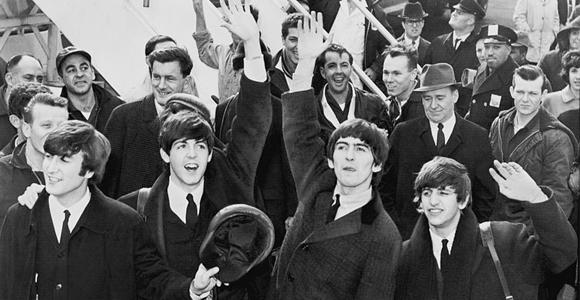Which Airline Brought Beatlemania to the U.S. in 1964? — #TBT Week of February 1


In the spirit of #TBT (“Throwback Thursday,” not Brazil’s Tabatinga Airport) FlyerTalk takes a look back at the events that helped shape modern aviation. Here are just a few moments from history that changed the face of the industry during the week of February 1.
February 1, 2006
After three years and 51 days, United Airlines announced their emergence from bankruptcy. The air carrier was forced into bankruptcy after posting losses of $4 billion in the aftermath of the September 11 attacks.
At the time, United’s bankruptcy was the largest filing by an airline and the sixth-largest corporate filing in the U.S. In order to reorganize, United instituted a number of policies that have held to today, including charging for meals on flights.
February 2, 1987
With a shareholder vote in December 1986 approving the move, PEOPLExpress officially merged with Continental Airlines after being purchased by Texas Air. Exactly two years later, the “great experiment” would fly for the last time from Newark Liberty International Airport (EWR) to Jacksonville International Airport (JAX).
As a result of the merger, Continental became the third-largest airline operating in the U.S. In 2014, a group of investors attempted to revive the PEOPLExpress brand, operations ceases after only three months of flying.
February 3, 1946
Although Pan Am had already been flying to and from Bermuda for nine years, the airline used its international route to do what seemed like the impossible: beat Howard Hughes to the air.
Despite Hughes’ input on the Lockheed Constellation, Pan Am was first to fly the aircraft on a commercial flight between New York and Bermuda. The Constellation is possibly best known for being the first airliner in widespread use with a high-altitude pressurized cabin.
February 4, 1902
Considered one of the world’s greatest aviators, Charles Lindbergh was born on this date in Detroit. Lindbergh served as the pilot of the “Spirit of St. Louis,” the first aircraft to fly from New York and land in Paris. Lindbergh would go on to serve as a consultant to aircraft manufacturers and fly over 50 combat missions as a civilian in World War II.
Following the war, Lindbergh served on the Congressional advisory panel to establish the site of the Air Force Academy and acted at a consultant to the Chief of Staff of the U.S. Air Force.
February 5, 1973
Despite international tensions, western airline Lufthansa and eastern airline Aeroflot mutually began flying across the Iron Curtain, opening service from Frankfurt to Moscow. The flights were part of a larger expansion plan by Aeroflot, which formed an international arm within the framework of IATA two years earlier.
February 6, 1946
Despite not being the first to get the Lockheed Constellation, Trans World Airlines moved forward with trans-Atlantic service, operating its first regular flight from New York’s LaGuardia Airport (LGA) to Paris Orly Airport (ORY) with stopovers in Canada and Ireland. The inaugural flight, which departed from New York the day before arrival, took 14 hours to complete.
February 7, 1964
With Beatlemania in full swing, the “Fab Four” arrived at John F. Kennedy International Airport (JFK) on Pan Am Flight 101 to begin their first U.S. tour. The band was greeted at the airport by an estimated 3,000 fans, and two days later, John, Paul, George and Ringo captured the attention of 73 million Americans with their appearance on The Ed Sullivan Show.
[Photo: United Press International via Wikimedia]





















